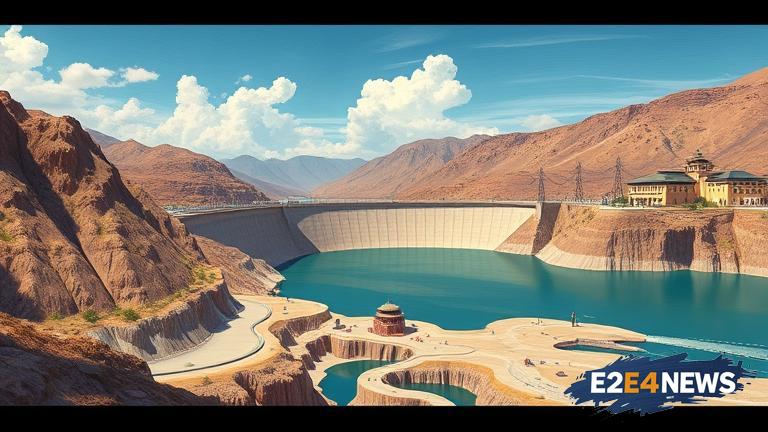China has officially begun building a mega dam in Tibet, a project that has been met with both excitement and trepidation. The dam, which is expected to be one of the largest in the world, will be constructed on the Yarlung Tsangpo River in the Tibet Autonomous Region. The project has been in the planning stages for several years, with Chinese officials touting its potential to provide clean energy and stimulate economic growth in the region. However, critics have raised concerns over the potential environmental and social impacts of the dam, including the displacement of local communities and the disruption of natural habitats. The dam is expected to have a capacity of over 300 megawatts, making it one of the largest hydroelectric projects in the world. Chinese officials have stated that the project will be completed in several years, although an exact timeline has not been released. The project has been met with skepticism from environmental groups, who argue that the dam will have devastating consequences for the local ecosystem. The Yarlung Tsangpo River is home to a diverse range of flora and fauna, and the construction of the dam is expected to disrupt the natural flow of the river. Additionally, the project has raised concerns over the potential for earthquakes and landslides in the region, which is prone to seismic activity. Despite these concerns, Chinese officials have pushed forward with the project, citing its potential to provide clean energy and stimulate economic growth. The project is part of China’s larger efforts to develop its western regions, including the Tibet Autonomous Region. The Chinese government has invested heavily in infrastructure projects in the region, including roads, railways, and dams. However, these projects have been met with criticism from local communities, who argue that they have not been adequately consulted or compensated. The construction of the mega dam is expected to have significant implications for the local community, including the potential displacement of thousands of people. The project has also raised concerns over the potential for human rights abuses, including the forced relocation of local communities. Furthermore, the project has sparked concerns over the potential for environmental degradation, including the destruction of natural habitats and the disruption of the natural flow of the river. The Chinese government has stated that it will take steps to mitigate the environmental and social impacts of the project, although the effectiveness of these measures remains to be seen. In conclusion, the construction of the mega dam in Tibet is a complex and contentious issue, with significant implications for the local community and the environment. While the project has the potential to provide clean energy and stimulate economic growth, it also raises concerns over the potential for environmental and social impacts.
